15 Best Food Destinations in Asia for Culinary Adventurers
Asia is a haven for food lovers, offering a rich and diverse culinary landscape that spans centuries of tradition and innovation. From the bustling street food stalls in Bangkok to the refined sushi restaurants of Tokyo, each destination provides unique flavors and cooking techniques. Whether you crave bold spices, fresh seafood, or comforting street snacks, there is something to satisfy every palate. Explore the best places in Asia to indulge in incredible food experiences that will leave you craving more.
This post may contain affiliate links, which helps keep this content free. Please read our disclosure for more info.
Bangkok, Thailand
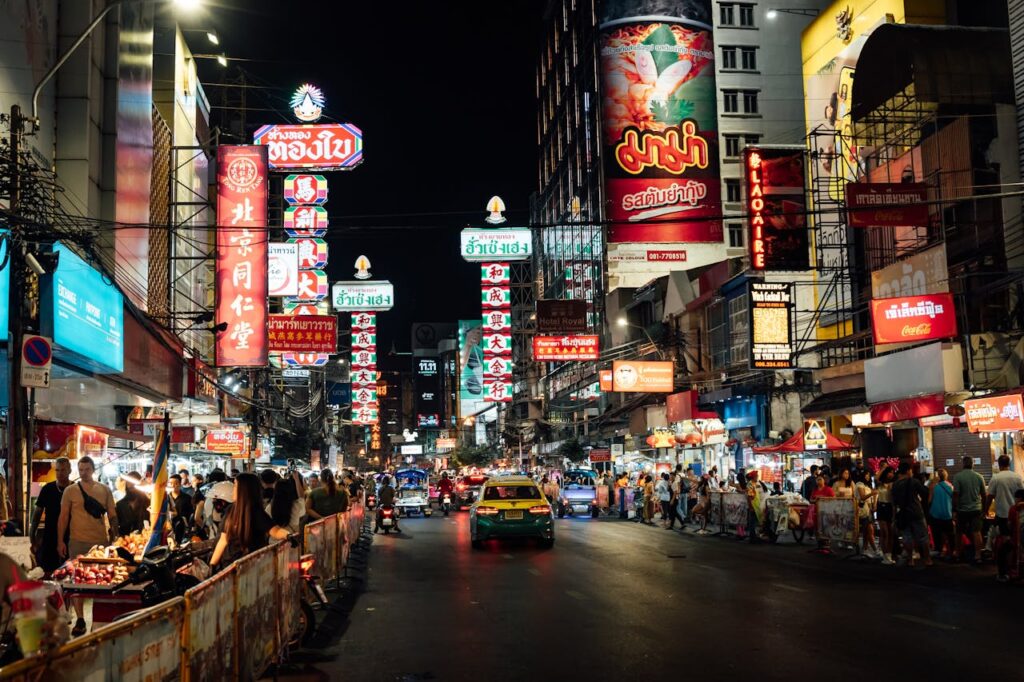
Bangkok is a paradise for food lovers, with its vibrant street food scene serving up an endless variety of Thai dishes. The city’s streets are lined with vendors offering everything from spicy curries to sweet desserts. Popular dishes like pad Thai, som tam (papaya salad), and satay are staples, and it’s easy to find vendors who serve them up with their unique twists. The night markets, like Yaowarat in Chinatown, offer an even more diverse array of options, with seafood, grilled meats, and an assortment of street snacks readily available.
For those looking for a more refined culinary experience, Bangkok also boasts several Michelin-starred restaurants that elevate traditional Thai ingredients into fine dining experiences. The city’s luxury hotels feature restaurants offering a blend of Thai and international cuisine, giving guests a chance to experience Thailand’s rich gastronomic culture in a sophisticated setting. Additionally, cooking classes in Bangkok provide visitors the opportunity to learn how to recreate these delicious dishes at home, adding another layer to the city’s food-centric culture.
Tokyo, Japan

Tokyo stands as a culinary epicenter where traditional Japanese dishes are celebrated alongside cutting-edge gastronomic innovations. The city is known for its sushi, and no visit is complete without experiencing the world-renowned sushi restaurants, some of which are Michelin-starred. At Tsukiji Outer Market, visitors can indulge in the freshest sushi and seafood, while street vendors offer savory options like takoyaki (octopus balls) and tempura. Tokyo’s ramen shops are also famous, each offering a unique flavor profile, from soy-based broths to miso and tonkotsu (pork bone broth).
Aside from sushi and ramen, Tokyo is home to various regional specialties like yakitori (grilled chicken skewers) and monjayaki (savory pancake). The city is also famous for its izakayas (Japanese pubs), where locals gather to unwind with drinks and small plates. Tokyo is not just about traditional food; it is also a leader in innovative and fusion cuisine, where chefs experiment with modern cooking techniques. For those eager to learn, Tokyo offers plenty of cooking classes, where you can try your hand at sushi making or perfect your tempura skills.
Penang, Malaysia

Penang is a must-visit for anyone looking to dive deep into Southeast Asian food culture. The island’s capital, George Town, is a UNESCO World Heritage site and a food lover’s dream. The local food scene reflects the island’s multicultural influences, including Chinese, Malay, and Indian cuisines. Local favorites include char kway teow (stir-fried noodles), asam laksa (spicy and tangy fish-based soup), and nasi lemak (coconut rice with sambal). Hawker stalls line the streets, offering these dishes at affordable prices, making it easy for visitors to indulge in Penang’s culinary delights without breaking the bank.
What makes Penang unique is the blend of flavors found in its food, with bold spices, fresh herbs, and seafood playing key roles. The island also boasts a vibrant fusion of Peranakan (Straits Chinese) cuisine, which combines Chinese ingredients with Malay cooking techniques. For those who wish to learn more about local flavors, Penang offers cooking classes where visitors can try their hand at making traditional dishes. Whether you are eating at a humble street stall or enjoying a meal at a fine restaurant, Penang is a destination that celebrates the joy of food and culinary discovery.
Singapore
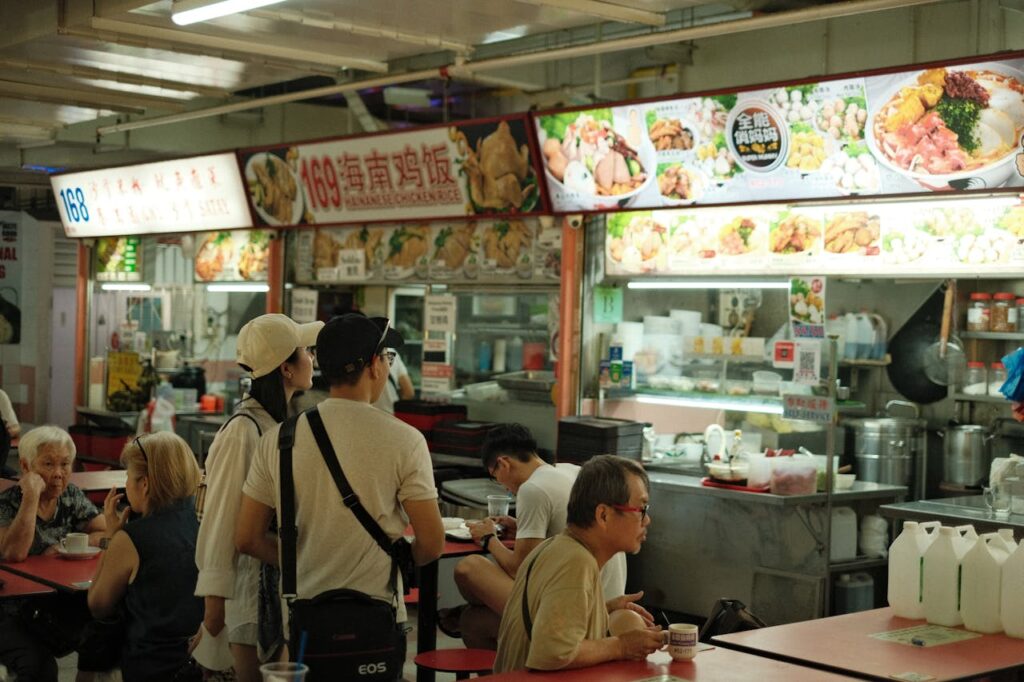
Singapore is a melting pot of cultures, and its food scene reflects the rich diversity of its people. From traditional hawker centers to Michelin-starred restaurants, Singapore offers a wide range of culinary experiences. The city’s famous hawker centers, such as Maxwell Food Centre and Lau Pa Sat, are filled with stalls serving iconic dishes like chicken rice, chili crab, and laksa. These centers provide a unique opportunity to sample a variety of dishes in one place, allowing visitors to experience Singapore’s diverse culinary landscape in a single meal.
Beyond the hawker stalls, Singapore is home to a growing fine dining scene. The city’s multicultural influences are evident in its restaurants, with a fusion of Malay, Chinese, Indian, and Western cuisines. For those eager to explore the island’s food further, Singapore offers many cooking schools where you can learn how to prepare local dishes such as satay or sambal. Singapore’s commitment to food innovation ensures that culinary adventurers can always find something new and exciting to try.
Hanoi, Vietnam
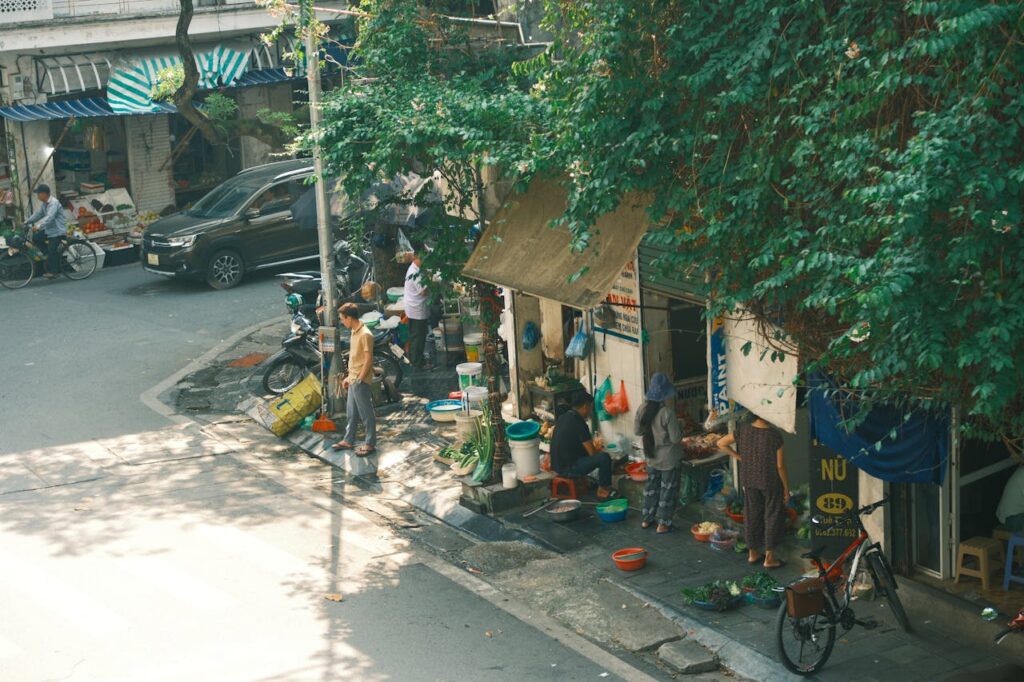
Hanoi, Vietnam’s capital, is a food lover’s haven, offering a mix of traditional Vietnamese dishes that have been perfected over centuries. The city is famous for its street food, particularly pho (a fragrant noodle soup with beef or chicken), which is often served with fresh herbs and lime. A visit to Hanoi would not be complete without trying bánh cuốn (steamed rice rolls filled with minced pork and mushrooms) or bun cha (grilled pork with vermicelli noodles). The narrow streets of the Old Quarter are lined with food stalls where you can sample these dishes and more.
The food in Hanoi is distinct from other parts of Vietnam due to its use of fresh, local ingredients and unique flavor combinations. Street food is a big part of the city’s culture, but Hanoi is also home to traditional family-run restaurants serving hearty dishes like the rich, savory beef stew known as “bo kho.” For those who want to get a deeper understanding of Vietnamese food, Hanoi offers cooking classes where tourists can learn to make dishes such as pho or rice paper rolls. Exploring the food in Hanoi is a must for any culinary adventurer looking to taste the authentic flavors of Vietnam.
Seoul, South Korea
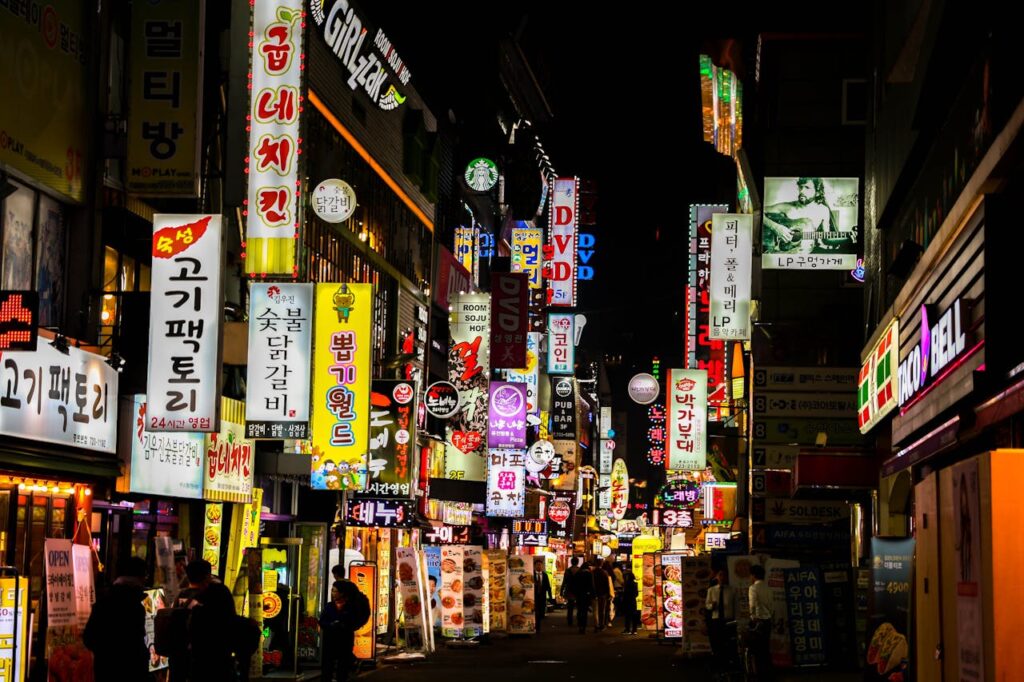
Seoul offers a dynamic and exciting culinary scene where traditional Korean flavors meet modern influences. Korean barbecue (samgyeopsal), where diners grill their meat at the table, is a must-try experience, and Seoul is filled with restaurants specializing in this communal dining style. Alongside barbecue, visitors can enjoy dishes like bibimbap (rice with vegetables and meat), kimchi jjigae (kimchi stew), and tteokbokki (spicy rice cakes). The city also has a burgeoning street food scene with vendors selling everything from hotteok (sweet pancakes) to odeng (fish cakes), giving visitors a chance to explore local flavors on the go.
In addition to street food, Seoul has a growing number of high-end restaurants that focus on modern Korean cuisine. Many of these restaurants take traditional Korean dishes and elevate them with innovative techniques and presentations. For those interested in learning the secrets behind these flavors, cooking classes are available throughout the city. Whether you are savoring kimchi or experimenting with contemporary Korean dishes, Seoul offers a rich culinary adventure for all.
Hong Kong, China
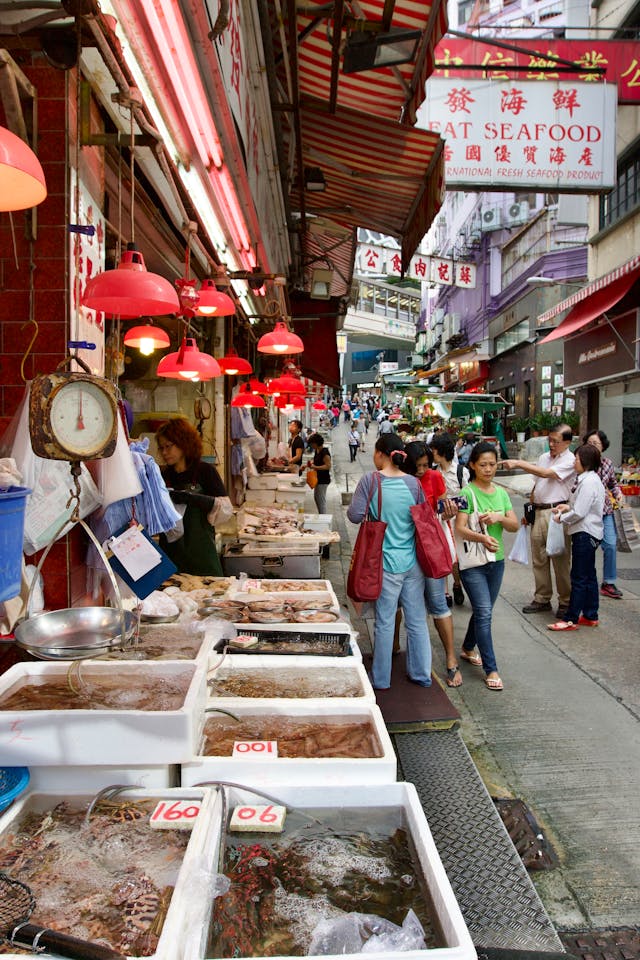
Hong Kong is a bustling city with an extraordinary food scene, blending Cantonese traditions with international influences. The city is famous for dim sum, and there is no better place to try these small, flavorful bites than in one of the city’s bustling teahouses. From dumplings to buns filled with sweet or savory fillings, dim sum is a culinary tradition that locals and visitors alike love. Beyond dim sum, Hong Kong’s street food culture is lively, with options like egg waffles, fish balls, and stinky tofu that reflect the city’s rich culinary heritage.
Hong Kong also offers a range of high-end dining experiences, with many Michelin-starred restaurants showcasing Cantonese cuisine with a modern twist. The city’s food culture is influenced by its colonial history, which is reflected in the fusion of Chinese and Western cuisines found in its upscale eateries. For those looking to dive deeper into the culinary world, cooking classes allow visitors to try their hand at making traditional dishes such as char siu (barbecued pork) or wonton noodles. Hong Kong is a must-visit for anyone eager to explore the diverse and delicious world of Chinese food.
Kuala Lumpur, Malaysia
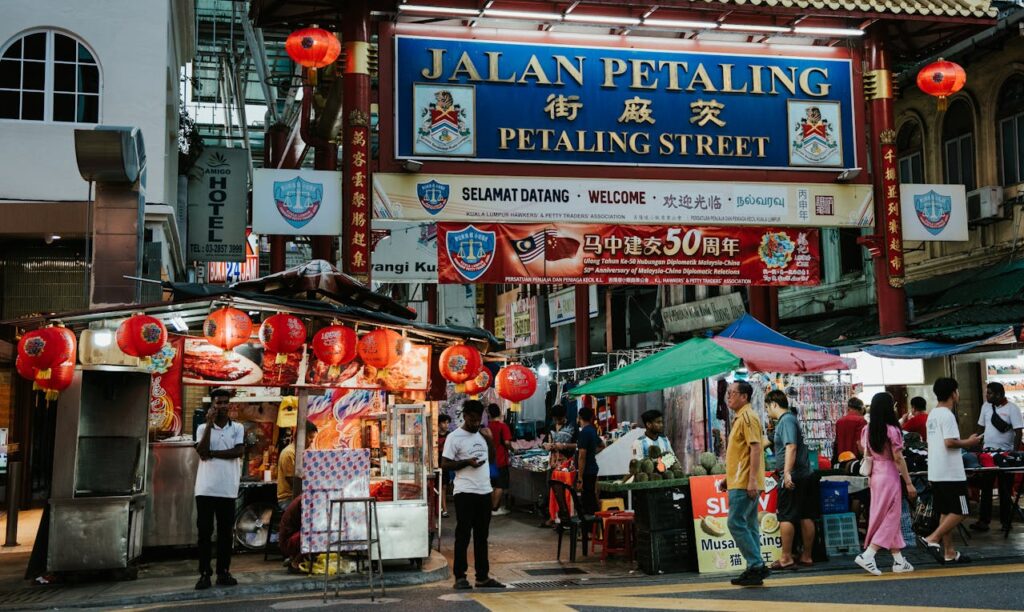
Kuala Lumpur is a city where food lovers can explore a vibrant mix of Malay, Chinese, and Indian influences. Street food is a big part of the local culture, with vendors offering dishes like nasi lemak (coconut rice with spicy sambal), roti canai (flaky flatbread), and char kway teow (stir-fried noodles). These dishes showcase the city’s multicultural essence and can be found at hawker stalls and local markets throughout the city. Jalan Alor, a famous food street, is one of the best places to explore a wide range of local foods, from grilled skewers to noodle soups.
The city also boasts a growing number of upscale restaurants that offer contemporary takes on traditional Malaysian cuisine. Visitors can enjoy fine dining experiences that highlight the rich flavors and ingredients of Malaysian food, such as seafood, tropical fruits, and spices. For those eager to get hands-on with the food, Kuala Lumpur offers cooking classes where participants can learn to prepare local dishes, gaining a deeper understanding of the culinary traditions that make Malaysia such a unique food destination.
Bangladesh
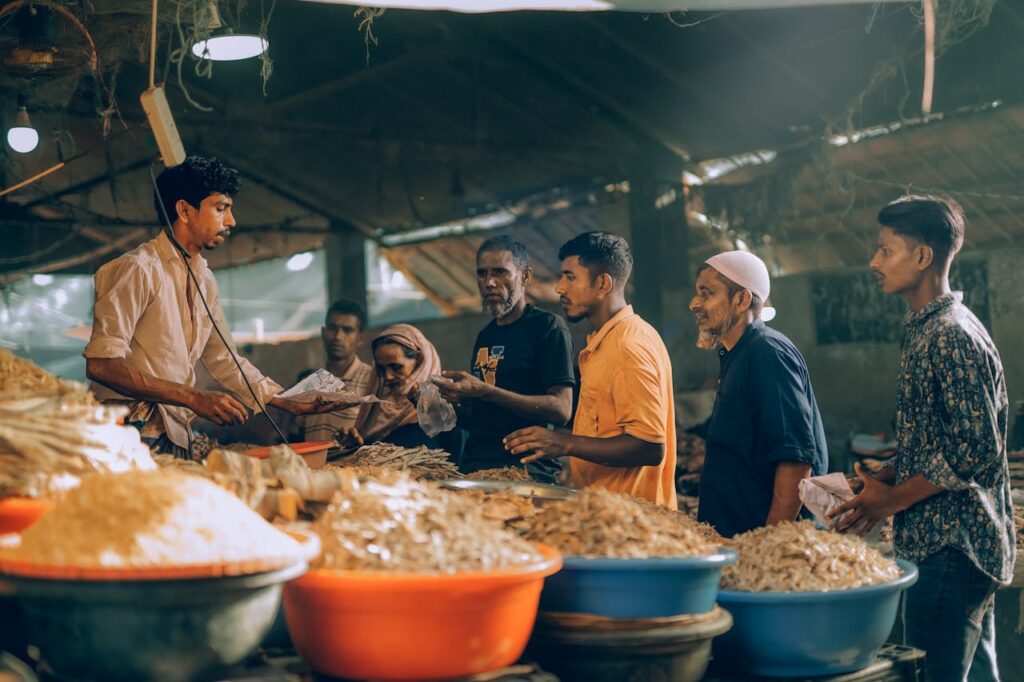
Dhaka, the capital of Bangladesh, is a hidden gem for culinary adventurers. The food in Bangladesh is influenced by a variety of cultures, resulting in rich, flavorful dishes. One of the most iconic meals is bhuna khichuri (spiced rice and lentils), which is often served with meat or fried fish. Street food is also an integral part of Dhaka’s food scene, with vendors selling treats like fuchka (crispy dumplings) and chotpoti (spicy chickpeas). These dishes often combine complex spices and fresh ingredients, offering a unique flavor profile not found elsewhere in Asia.
Bangladesh’s culinary diversity extends to its sweets, such as roshogolla (sweetened cheese balls) and chomchom (flavored sugar balls). The country’s cuisine is often centered around rice and fish, with the fresh fish from the rivers of Bangladesh playing a central role in many meals. Visitors who want to dive deeper into the local food culture can join cooking classes, where they will learn to make some of these traditional dishes. Dhaka is a wonderful destination for those looking to explore a more off-the-beaten-path culinary experience.
Ho Chi Minh City, Vietnam
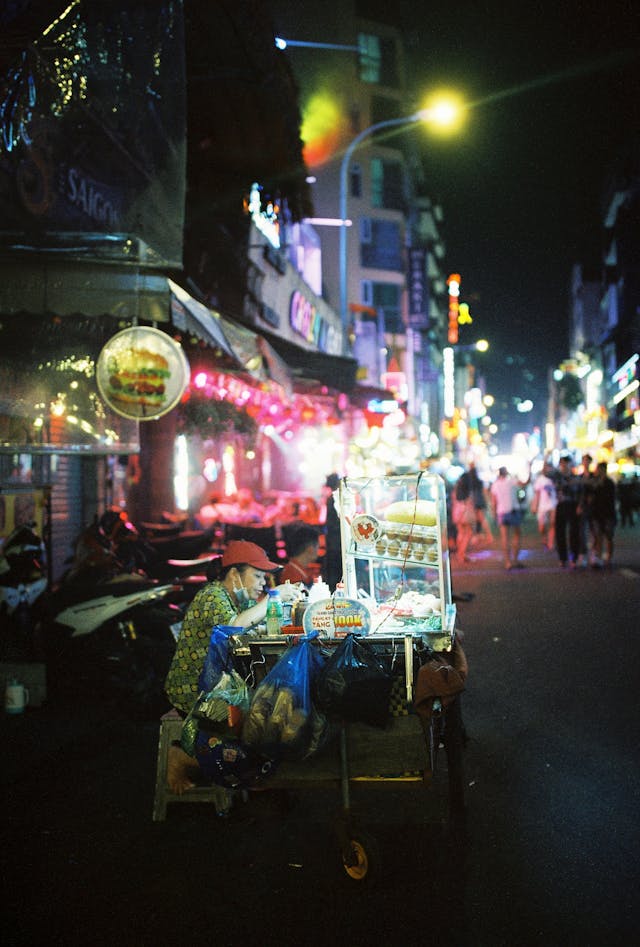
Ho Chi Minh City, formerly Saigon, is a vibrant and dynamic city that offers an explosion of flavors. The food scene here is a reflection of the city’s history, combining traditional Vietnamese dishes with French colonial influences. One of the most beloved dishes is bánh mì, a delicious Vietnamese sandwich filled with meats, pickled vegetables, and herbs, all tucked into a crispy baguette. The city is also famous for pho, a comforting noodle soup made with beef or chicken, and various fresh spring rolls, known for their delicate and fresh ingredients.
Ho Chi Minh City is also home to countless street food vendors, offering a variety of small bites, like bánh xèo (savory pancakes) and hủ tiếu (noodle soup with pork). Alongside the street food scene, the city has a growing number of fine-dining establishments that showcase both traditional Vietnamese cuisine and modern fusion dishes. For food enthusiasts, Ho Chi Minh City also provides cooking classes where you can learn how to make some of the most iconic Vietnamese dishes from scratch.
Mumbai, India

Mumbai is India’s food capital, where rich culinary traditions blend with global influences to create a vibrant food scene. The city’s street food is world-famous, with options like vada pav (spicy potato fritters in a bun) and pav bhaji (vegetable curry with bread) that are beloved by locals and visitors alike. You can find these iconic snacks at roadside stalls and bustling markets all around the city. Mumbai’s diverse population also means that the food scene offers everything from Gujarati to Parsi cuisine, each with its distinct flavors and cooking techniques.
In addition to street food, Mumbai offers a wide range of fine dining restaurants that explore both Indian and international flavors. The city is home to a thriving food culture, with some of the best seafood restaurants in the country, particularly along its beautiful coastline. Cooking schools in Mumbai offer a chance to learn about the variety of Indian spices and ingredients that make Indian cuisine so distinct, ensuring that visitors can recreate the flavors at home. Mumbai’s diverse and rich food culture makes it a must-visit destination for any culinary adventurer.
Bali, Indonesia
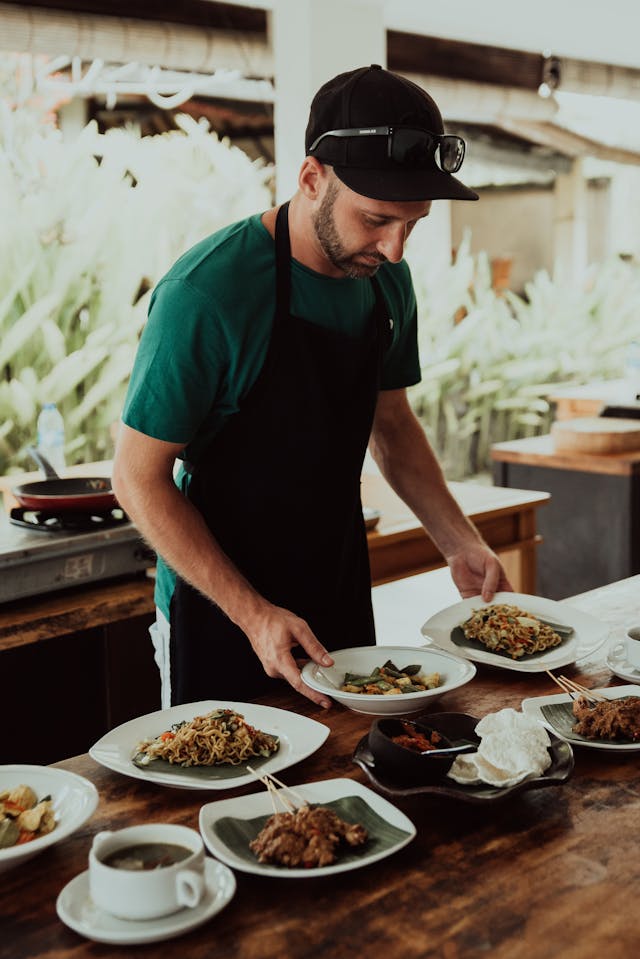
Bali is a haven for food lovers looking to experience the unique flavors of Indonesian cuisine. Known for its fresh ingredients, vibrant spices, and traditional cooking methods, Bali’s food scene is one of the best in Southeast Asia. Local dishes like babi guling (suckling pig), nasi campur (rice with various side dishes), and sate lilit (minced meat skewers) are staples, and they can be found at both street stalls and local warungs (restaurants). Bali also offers an array of tropical fruits like durian, mangosteen, and rambutan, which are commonly used in both savory and sweet dishes.
The island’s food scene is deeply influenced by Balinese culture, and many of the island’s offerings are made with locally grown spices, herbs, and rice. Visitors can explore food markets, where they can sample local produce and dishes. Bali is also home to several cooking schools, where guests can learn the art of Balinese cooking, diving into the rich flavors and techniques that make the island’s food so special. Whether enjoying a meal on the beach or learning to cook in a traditional Balinese kitchen, the island provides a memorable culinary experience.
Manila, Philippines
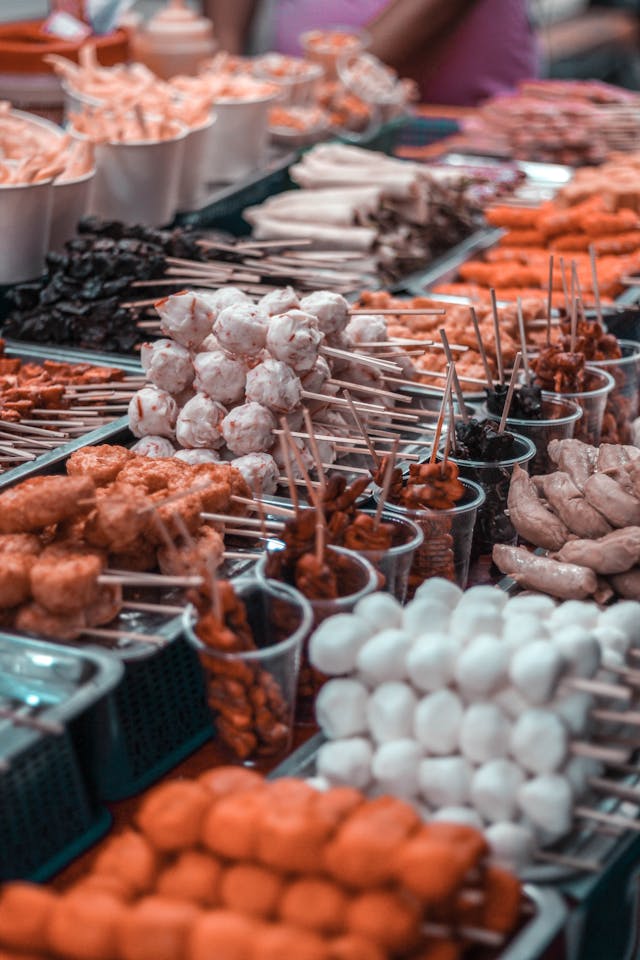
Manila, the bustling capital of the Philippines, is a city with a rich and diverse culinary heritage. The food in Manila reflects a mix of native Filipino ingredients and influences from China, Spain, and the United States. Local dishes like adobo (marinated meat), lechon (roast pig), and lumpia (spring rolls) are commonly served at restaurants and street vendors. Manila’s food scene is also influenced by its proximity to the sea, with an abundance of fresh seafood options, including crispy fried bangus (milkfish) and sinigang na baboy (pork in sour soup).
While street food is a highlight, Manila also offers a range of upscale restaurants that serve refined Filipino cuisine, with modern twists on traditional dishes. The city’s international food scene is also booming, with restaurants offering Japanese, Korean, and Western dishes. For those interested in learning about the flavors of Filipino cuisine, Manila provides cooking classes where you can create your versions of iconic dishes like pancit (noodles) and kare-kare (oxtail stew). With so much variety and flavor, Manila is a perfect destination for food lovers.
Chengdu, China
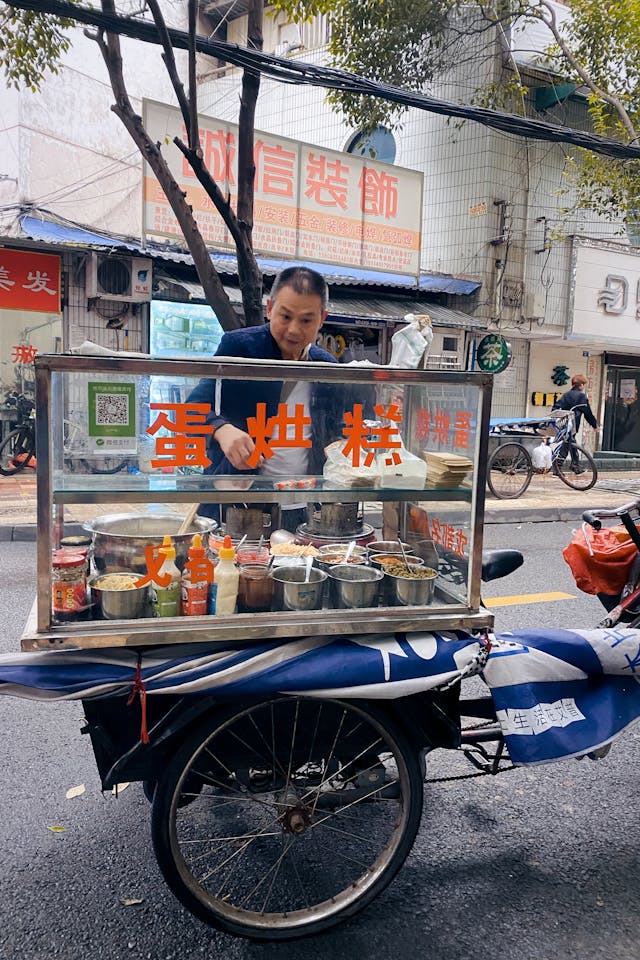
Chengdu, the capital of Sichuan Province, is the place to go for anyone who loves bold, spicy food. Famous for its use of chili peppers and Sichuan peppercorns, Chengdu offers dishes that are both fiery and flavorful. Hotpot, a communal dish where you cook various meats and vegetables in a spicy broth, is a must-try when visiting. Chengdu is also known for its street food, including mapo tofu (spicy tofu with minced meat), dan dan noodles, and various skewered meats, all of which showcase the region’s signature spice and heat.
The food culture in Chengdu is deeply connected to the city’s history and local ingredients, many of which are grown in the surrounding Sichuan countryside. The city also boasts several fine-dining restaurants where chefs take Sichuan cuisine to the next level with creative presentations and modern cooking techniques. For those interested in learning about Sichuan cuisine, cooking schools in Chengdu offer immersive experiences where you can try your hand at creating some of the region’s iconic dishes. Chengdu’s food scene is vibrant and complex, making it a top destination for adventurous eaters.
Kyoto, Japan
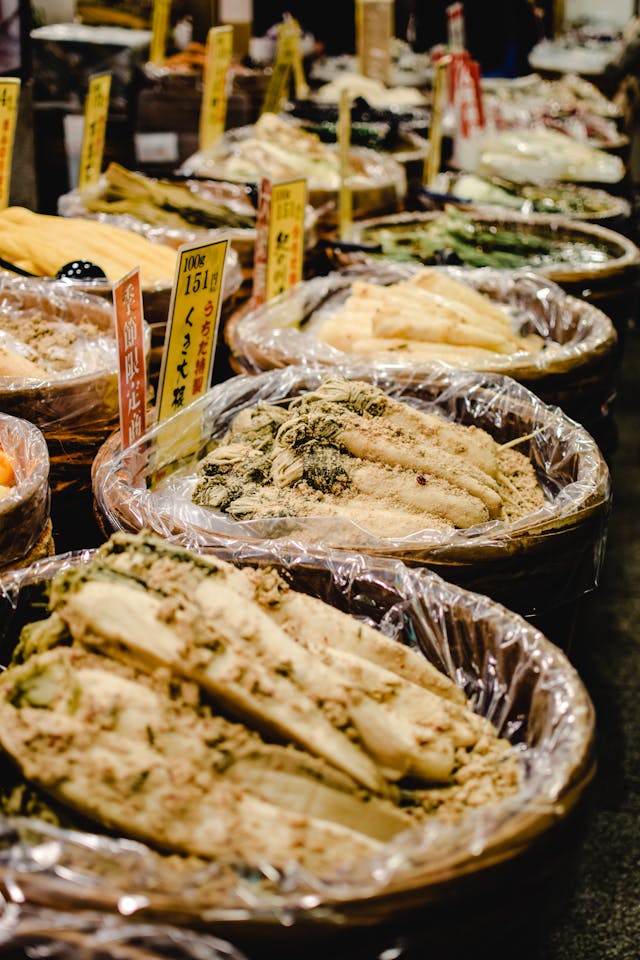
Kyoto is a city that celebrates traditional Japanese cuisine in its most refined and elegant forms. Known for its kaiseki (multi-course meal) dining, Kyoto is the place to experience Japanese food in its most delicate and artful form. Local ingredients like tofu, seasonal vegetables, and fish are prepared with precision and served in an aesthetically pleasing way. The city’s food scene also includes traditional Japanese sweets, or wagashi, often enjoyed with matcha tea in the city’s historic tea houses.
While Kyoto may not have the same bustling street food scene as Tokyo, its food culture is centered around peaceful and meditative dining experiences. Visitors can explore markets like Nishiki Market, where local produce and ingredients are sold, or dine at a ryokan (traditional inn) for an authentic kaiseki meal. Kyoto’s culinary offerings reflect its cultural heritage, offering a unique and peaceful culinary journey for anyone looking to experience the refined art of Japanese cuisine.
This article originally appeared on Avocadu.
